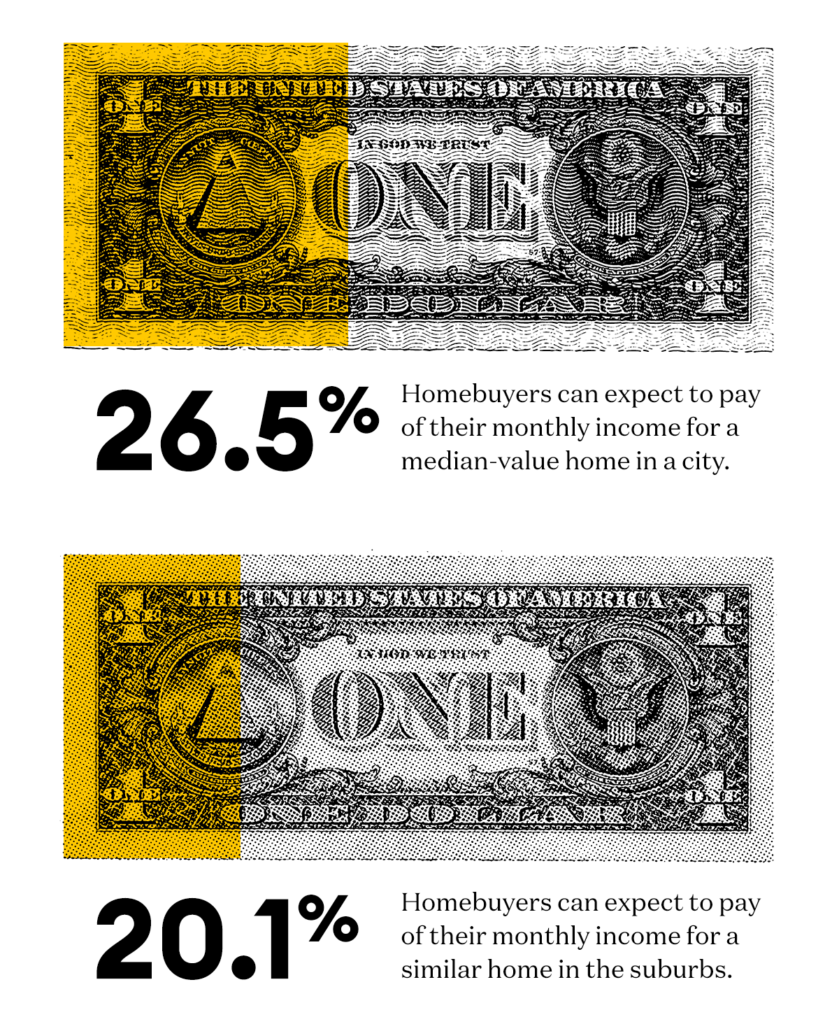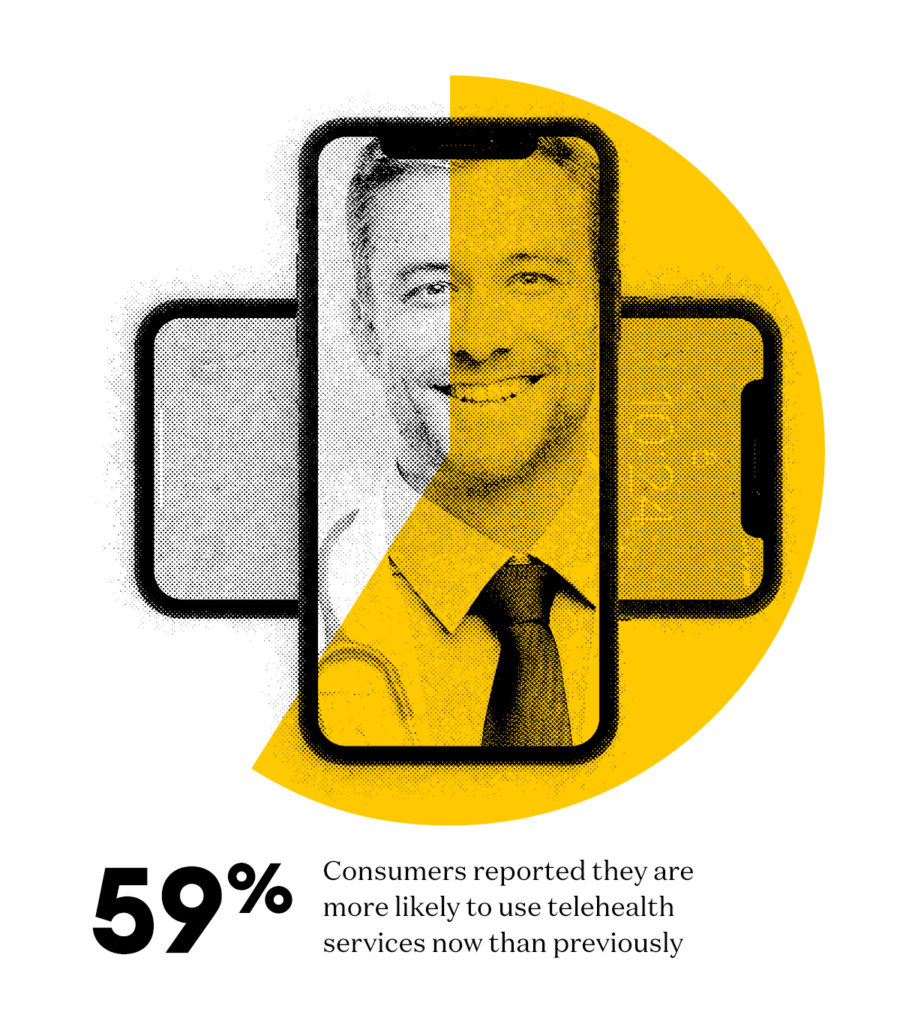Following decades of densification of urban living, recent data points to an outmigration of urban residents in 2020 the likes of which have never been seen (at least not in our lifetime). In a recent New York Times article, FlatRate Moving reported a 78% increase in moves from New York City to Connecticut; a 48% increase to Long Island; and 38% to New Jersey from March 15 to April 28, 2020, compared to 2019.
In a pre-pandemic state, living in the city made everything wonderfully accessible. Workplaces, apartments, your social circle—and the eclectic mix of bars, restaurants, and entertainment venues where you mingled with them—were all close at hand. Add a pandemic and a shutdown to the mix, and the city suddenly doesn’t seem quite so compelling. At the time of writing, the majority of workplaces for office workers are still closed as are all those bars and restaurants. Plus, you can no longer spend time with your social circle and that apartment with no private outdoor space is making your cabin fever worse the longer you’re forced to shelter-in-place there.
An online Harris Poll of 2,050 U.S. adults nationwide from April 25 to 27 asked whether they would consider moving to less-populated areas once the pandemic ended.
- Nearly 40% of U.S. adults living in urban areas indicated they would consider moving “out of populated areas and toward rural areas,” compared to 29% of overall respondents.
- Forty-three percent of urbanites – a significantly higher percentage than of suburban (26%) and rural (21%) residents – said they’d recently browsed real estate websites such as Zillow, Redfin, and Realtor.com for homes or apartments to rent or buy.

What’s enabling this trend?
If you think about it on a human level, it’s easy to understand some of the forces that are driving this flight to the suburbs. Let’s imagine for a moment you’re a Millennial couple without kids fortunate enough to hold down two safe, well-paying jobs that allow you to live in an apartment on the Upper West Side. If you further imagine you have a dog, that’s almost 30 round trips each week in a small elevator to get her outside for a walk. Whereas if you were in any number of airier, greener spaces outside the city like Maplewood, NJ, Greenwich, CT, or Westchester County, chances are you could just open your back door to let the dog out.
Similarly, if you’ve spent the past four-plus months working from home with no loss of productivity, how important is it to be a short 1 Line ride to your office in Bryant Park? If the plan for the future is to attend the office in person once or maybe twice a month and work from home the rest of the time, perhaps it’s fine to be an hour or so away from Grand Central on the Metro-North.
There are financial implications to this movement as well. In a recent study, Zillow found that homebuyers can expect to pay 26.5% of their income each month for a median-value home in a city, compared to 20.2% for a similar home in the suburbs.
COVID-19 has forced us to think differently about our safety and to make changes where we can to preserve our physical and mental well being. And while the examples above focus on the Northeast, this is not a New York or even a coastal cities issue. Even in landlocked Dallas, apartment occupancies are falling in city center markets but rising rapidly in the suburbs. Suburban apartment communities in the Dallas-Fort Worth area saw a 40% rise in searches in recent months, according to a study by Apartments.com.
“Shelter-in-place orders have driven renters in tiny city-center apartments to wish they had more space to move around inside, a yard to play outdoors or even a quiet neighborhood in which to exercise,” said the Apartments.com analysts.
The rise of blended service models in response to this migration.
Many aspects of everyday life are predicated on the high-density lives some people are now attempting to leave behind. Significant adjustments and innovation will be required as businesses and other organizations adapt to a shrinking geographical customer base. They’ll be forced to deliver their existing service/value or new forms of service/value through new digital means that don’t rely so heavily on in-person interactions. While this investment is potentially daunting, it also poses an opportunity for businesses to reach entirely new audiences and customer bases. They’ll also be much more resilient and able to better withstand future challenges with blended service/value models.
Consider the rapid emergence of Telehealth. While gradually growing in acceptance before the pandemic struck, it has made remarkable progress in recent months. Philadelphia’s Jefferson Health network went from conducting a few dozen telemedicine sessions per week to scheduling 500-600 such visits per day in March, reflecting an effort by the network to move outpatient visits to virtual ones.
Aside from its safety benefits during a public health crisis, could telehealth be a mechanism to lower the cost of providing primary healthcare services? The potential would appear to be there. The demand is most certainly there. A survey by Sage Growth Partners and Black Book Market Research found that 25% of consumers had some experience of telehealth prior to the COVID-19 pandemic. Fifty-nine percent of consumers reported they are more likely to use telehealth services now than previously, while 33% would be prepared to leave their current physician for a provider who offered telehealth access.
Back to our fictional Millennial couple. These telehealth developments would give them the option to maintain their relationships with their primary care physicians in Manhattan even while they head to the suburbs. At the same time, providers in their new environs will be happy to welcome them to their practices which would help with advanced and critical care should specialist treatment or hospitalization be needed, for example.

Will the shift to the suburbs be sustainable? Or will it pass when COVID is somehow controlled?
This pandemic has forced much introspection as to what really matters to us as individuals. The flight to the suburbs is a flight to quality—specifically, a flight to an enhanced quality of life. If you think back to Maslow’s Hierarchy of Needs from your Psych 101 class, the needs at play here are what Maslow describes as ‘deficit needs,’ meaning we are only focused on them if they are absent or threatened. Serving physiological and safety needs may be what drives people out of high-density urban environments in the short term but will likely not be what keeps them in their new surroundings in the longer term. We would expect the lifestyle enhancements of having more personal space and a better environment to enable permanent work from home arrangements to be the key drivers moving forward.
As has been the case in earlier population migrations, it’s likely that if Millennials head for the suburbs in the coming months and years, their places in the cities will eventually be taken by members of the upcoming Generation Z once safety is no longer a primary concern.
At Tallwave, we see the challenges facing businesses to understand and innovate around these societal changes as an opportunity. If you need help thinking through how your business should respond, give us a call. We’d welcome the chance to work with you to evolve your customer experiences to help you prosper in the new paradigm of customer care and service delivery.


